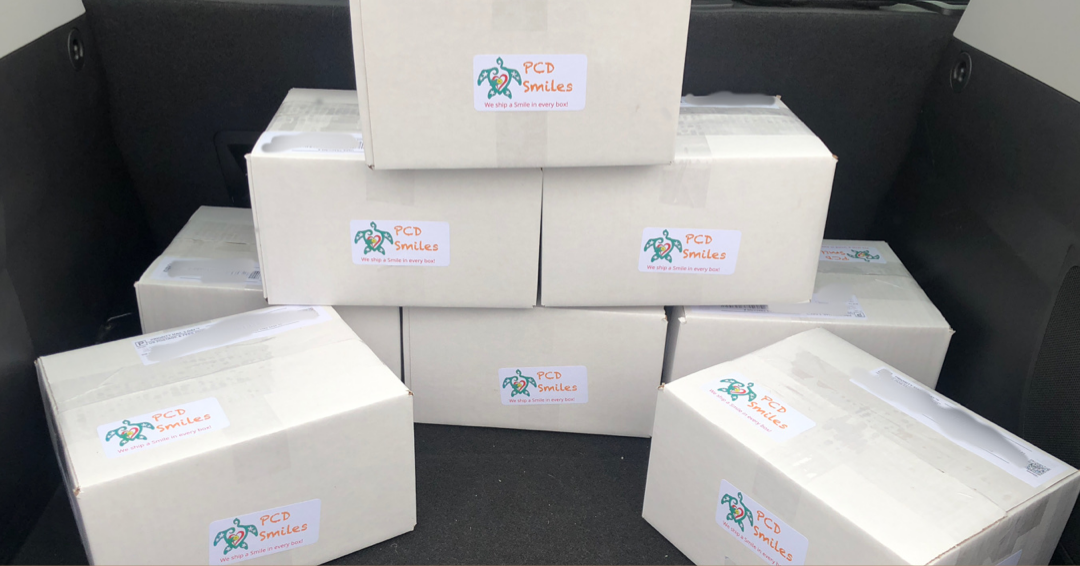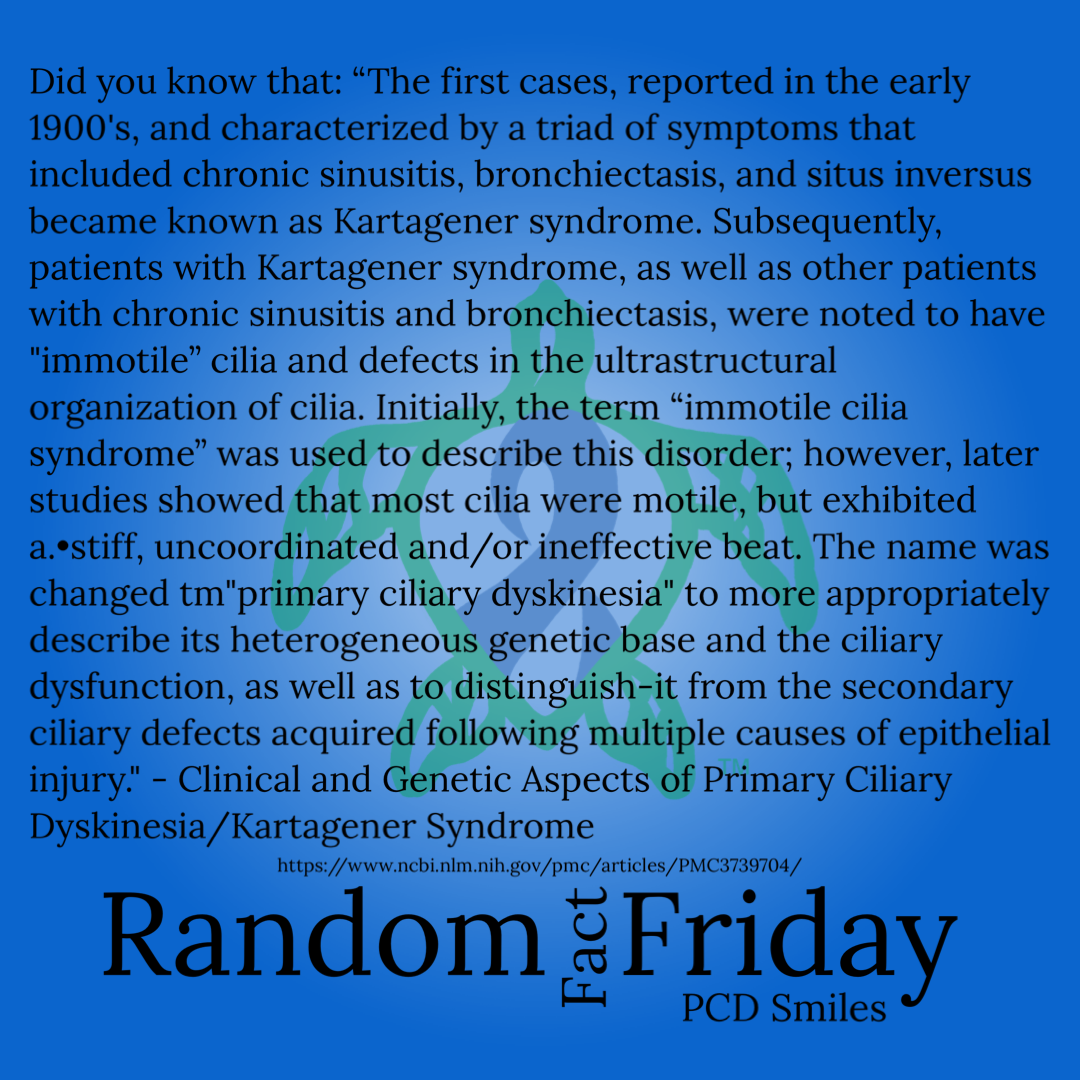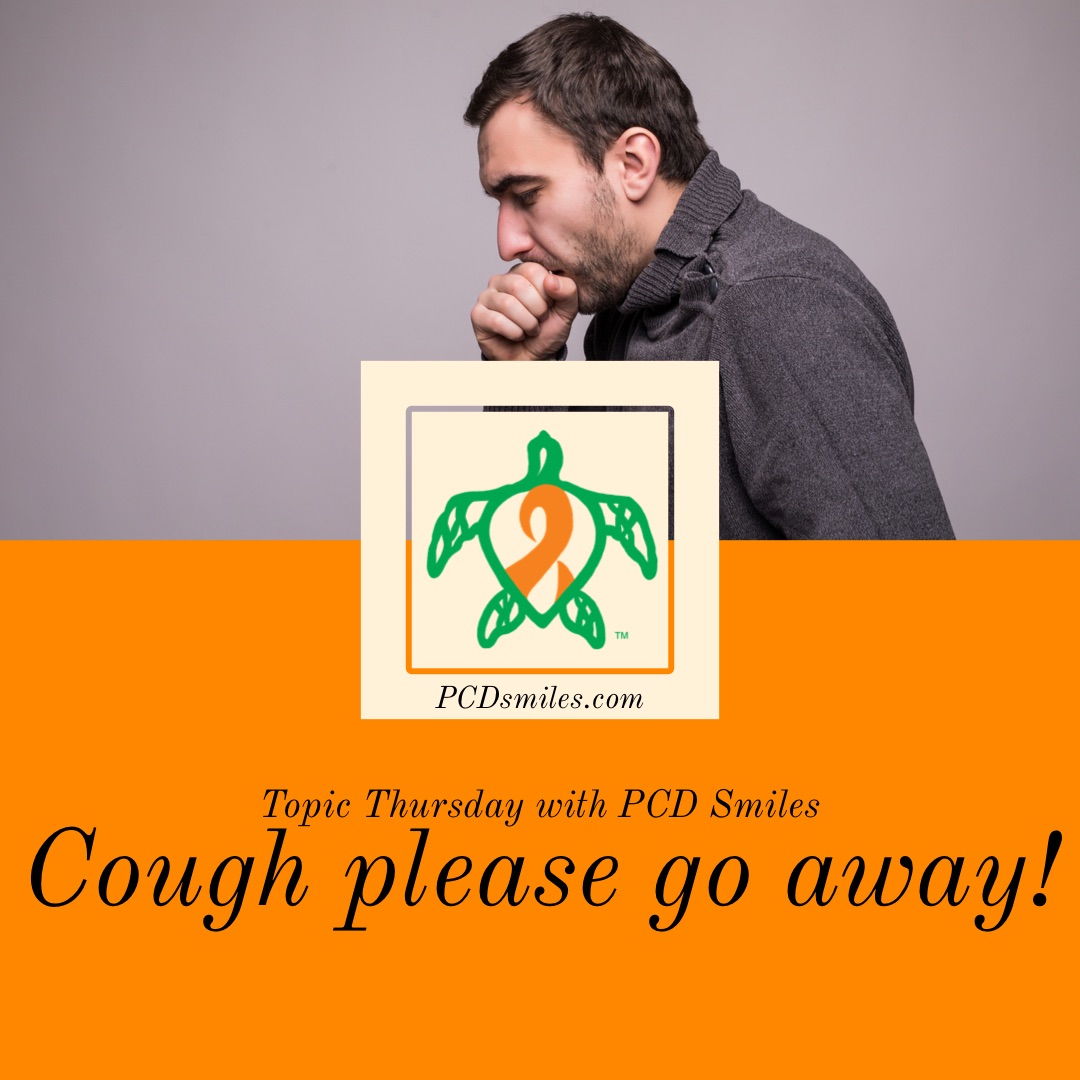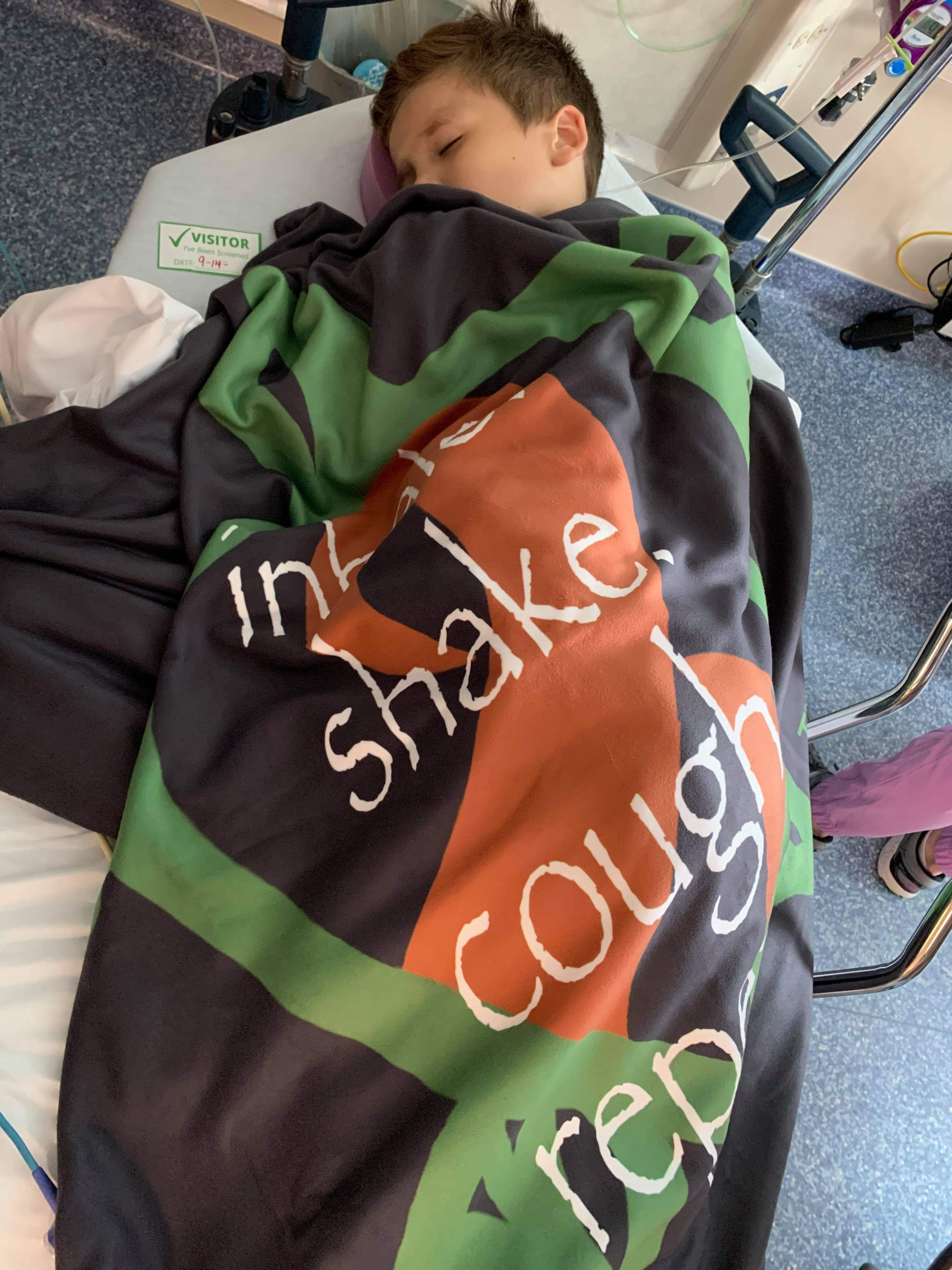Did you know that: "The first cases, reported in the early 1900's, and characterized by a triad of symptoms that included chronic sinusitis, bronchiectasis, and situs inversus became known as Kartagener syndrome. Subsequently, patients with Kartagener syndrome, as well as other patients with chronic sinusitis and bronchiectasis, were noted to have "immotile" cilia and defects in the ultrastructural organization of cilia. Initially, the term "immotile cilia syndrome" was used to describe this disorder; however, later studies showed that most cilia were motile, but exhibited a.•stiff, uncoordinated and/or ineffective beat. The name was changed tm"primary ciliary dyskinesia" to more appropriately describe its heterogeneous genetic base and the ciliary dysfunction, as well as to distinguish-it from the secondary ciliary defects acquired following multiple causes of epithelial injury." - Clinical and Genetic Aspects of Primary Ciliary Dyskinesia / Kartagener Syndrome (https://www.ncbi.nlm.nih.gov/pmc/articles/PMC3739704/)
The more you know…
Join our Facebook group Turtle Talk Café today, click here.
We have several ways that you can donate to PCD Smiles;
- Visit Smile E. Turtle's Amazon Wishlist
- For more information on how you can donate, please visit our "Donation" page to check out our "Do & Don't policies.
- Or sponsor a PCD Smiles cheer package today!
- To shop for your “Official” turtle care ribbon gear today, visit PCD Style or Smile E. Cove
Thank you for your consideration!
***Please speak to your respiratory therapist or your PCD medical team before commencing any new treatment. DO NOT start using a device, or technique, on this website if you have not discussed this with your PCD team first.***














